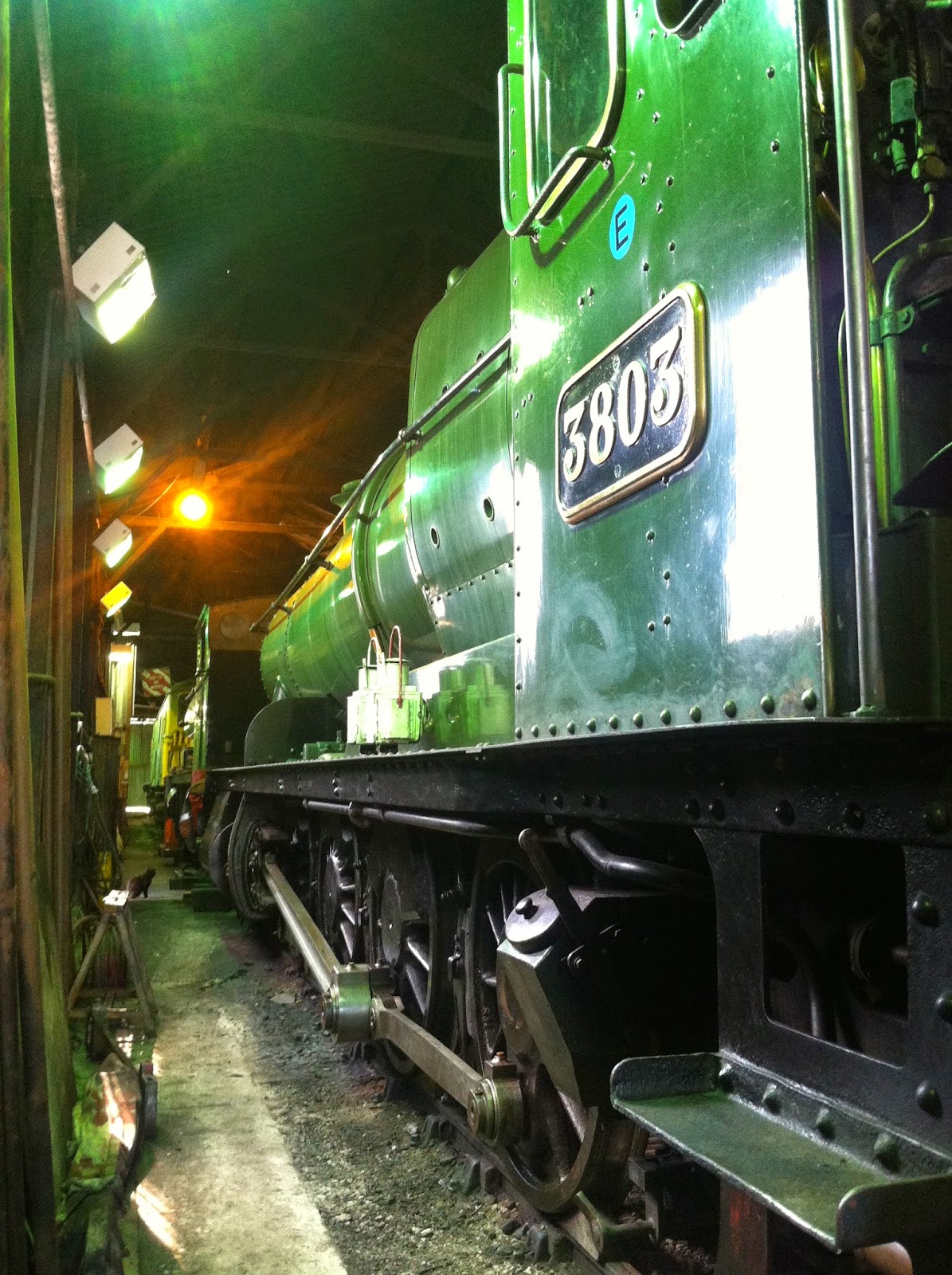Once changed into my overalls it was time to begin the checks. First, up into the cab, to check that the engine is secure and that the water level is OK for potential lighting: yes, 3/4 of a glass. Next, torch in hand, we go for an excursion into the massive smokebox of the 38XX. We check the tubes for leaks, the flu's for leaks, the superheater header, the pipework (main steam pipes, lube pipes etc), the petticoat, the blast pipe: everything really. We are not only checking for leaks but also structural problems such as loose blast pipe etc for example. It is always better performing an FTR (fitness to run) where you can on a cold engine as its easier to get around. Mind you, I say cold engine, it was still very warm in the gloom of the smokebox from last Sunday's running would you believe! The smokebox is also cleaned out at this point...
Next it is time to secure the smokebox door using the dart handles as a loose door will lose the vacuum required for steam raising. We then check around the engine for the mudlid inspection ports and the inspection plugs, looking for leaks all over. If all is OK it is time to check the firebox. We will check the stays, seems, tubeplate, tubes, flu's, fusible plugs and the condition of the grate and brick arch. If all is well, then the dry and ready locomotive is ready to light. Lucky for me, the locomotive had already had her firebox cleaned out and ashpan emptied which saves a fair bit of time...
When lighting a warming fire we do not light across the entire grate as this fire would be too much too quickly. Therefore we just light the rear-most section of the grate and end up with a sloping fire which will eventually rise up to the firehole door, sloping down to around 3ft in from the back-plate. This will mean that the flames will gradually rise up from the old coal to the new coal and thus the fire will gradually burn down. After all, the engine will be left burning overnight with all dampers closed and firehole doors shut. I lit the engine starting with a small bed of coal 1-lump thick at the back end to around 3ft in, as per usual. Around 1/2 a pallet of wood (if that) was then put on top with around 3-4 well soaked paraffin rags. The last rag was lit on the shovel before being tossed on top of the pile, which duly caught light. The fire then raged for a minute or so to get going before I piled around 5-6 shovelful's on top. The firehole doors were then shut with the rear damper open in order to provide the necessary primary air to get the fire going. With hardly any coal left in the tender it was time to fetch a shunter to take the engine down for coal. The shunter for the job was the feisty 0-4-0 BR Class 02 diesel hydraulic D2857 "Diane"...
With 3803 crackling away in the shed 'getting herself going', I was down in the North End checking over D2857 which I had been told was 'fit for use', and she was. D2857 is fairly easy to operate as the controls are basic. To start, we switch on the BIS (the electrics basically) and proceed to the 'engine room'. The cold-start on the Rolls-Royce engine is pushed in and the green button pressed. Without hesitation, the 02 roared into life, spewing a little blue smoke from the exhausts to start with. The engine then ticks over happily, creating air in the reservoir from the compressor. On the 02 the air is used for all of the controls such as the reversing gear, sanding, throttle, gear lever and of course the brakes. We wait until the necessary air has been created before setting off. The 'dashboard' on the 02 is seen here...
 |
| "Cab Controls on BR Class 02 Diesel Shunter D2857 Diane" |
3803 was soon dragged by D2857 down to the North End and secured on the coaling road...
 |
| "GWR Heavy Freight 2-8-0 No3803" |
The JCB waits patiently with the next bucket full of coal until the trimming has been completed...
After the JCB had easily loaded 8 buckets of coal into 3803's tender (which pretty much filled it), it was time for D2857 to push 3803 back to the shed. I left the loco at about 4pm with the fire made up to the firehole door in the traditional fashion...
 |
| "A Back End Warming Fire" |








2 comments:
Hi Sam, that was an interesting post. Did you have to do all that on your own though? Seems like a lot of work!
Kind regards,
Emma-claire.
We have supervisors ;)
Post a Comment